Hitch, Trek, Paddle, and Fly: A 5-Week, 500-Mile Expedition in the Brooks Range
The Brooks Range marks the northernmost section of the American Continental Divide. Traverses of the Brooks Range are not uncommon, but what makes each of them unique is their route and style. Max and Sarah recently published an account of a Brooks Range expedition this summer that involved creative use of hitchhiking, trekking, packrafting, and fine dining in some of the remotest habitations in the world. Neale’s account uniquely marries the experiences of traveling through a vast untouched wilderness with spending time in pockets of luxury made possible by Alaska’s resident oil subsidies.
The Route: “Anchorage” to “Kotzebue”
After hitchhiking north from Anchorage, Max and Sarah started at the Haul Road and worked their way west 60 miles by foot to the town of the Anaktuvuk Pass where they picked up their packraft. A combination of walking and paddling took them the 160 miles from Anaktuvuk Pass to Walker Lake (where they enjoyed some fine dining at an outfitter’s lodge). Paddling (and walking their boat in the slowest water) dominated the 197-mile section from Walker Lake to the town of Ambler. Another 107 miles took the duo to the town of Kiana, and the last 58 miles of the expedition from Kiana to the coastal town of Kotzebue was accomplished via bush plane.
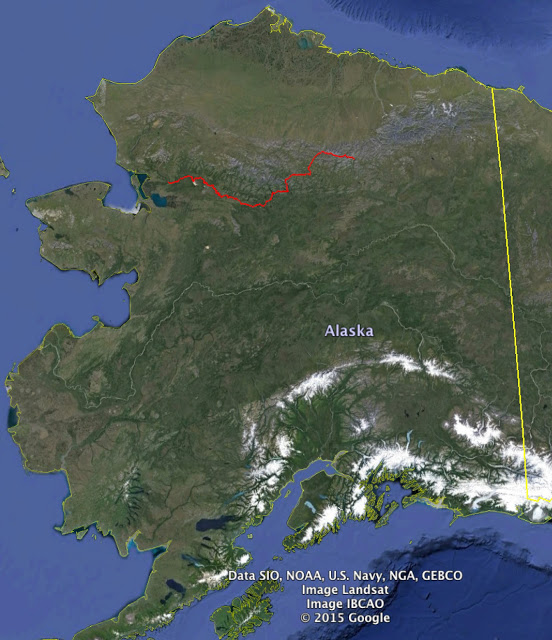
The Alaska Factor: North Slope Community
As I read Max’s story (never having ventured to Alaska), what was especially eye-opening for me was learning about how Alaska residents lived and about the infrastructure that helps support them. On their trip, Max and Sarah crossed near or through several villages and outfitting lodges. The accounts of their experiences – a dichotomy between wild nature and remote luxury – made me realize that the connection between the “middle-of-no-where” (where they trekked) with “everywhere else” (where I live) is a bit tighter than I thought.
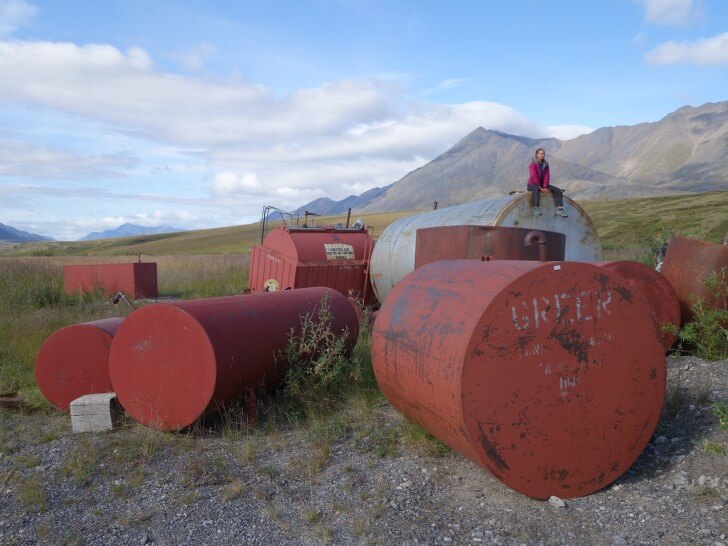
For Alaskans, full-time residency (and for some, never leaving the state) is a badge of honor. “The North” is a region steeped in tradition and respect for the outdoors, hard-work, and self-reliance. In the North Slope villages of the Brooks Range, where pavement is scarce and mail delays can be measured in weeks, life seems simpler and more peaceful. Despite the miles of wilderness that separate habitations in Northern Alaska, Max and Sarah learned that the North Slope residents have a bond of community and service towards each other – simply by cohabitating this giant space that they love – that seems rare in a modern society where two people sitting on a bus next to each other rarely say hello.
Highlights of a Journey in the Brooks Range
- Walking through bear dens;
- Discovering hundreds of caribou antlers;
- The silence of quiet paddling on some of the remotest lakes in the world;
- Extraordinarily low water flows that forced them to “walk” their packraft;
- Wilderness sand dunes – in Alaskan mountains? Whaaat!
Enjoy their journey in Max’s video, “North With You: 5 Weeks in Alaska’s Brooks Range”:

Q & A with Max & Sarah
What was the highlight of your trip?
Max: As the trip progressed, my mind became ever quieter. I cared less and less about our competitive, consumptive society. The highlight was returning home with a calm, quiet mind.
Sarah: Without question, the 50-mile flight over the delta was the highlight. That delta has been in my dream world for a long time.
What was the low point?
Max: Paddling the lower Kobuk was the most monotonous thing I’ve ever done. There were virtually no views because the river was the lowest in living memory (roughly 60% below the 33-year median flow – we mostly saw tall banks looming above us). It rained at least part of 11 consecutive days, and the river felt like a lake (it only dropped 6” per mile).
Sarah: I disagree. There were views! I enjoyed the expanses of sky and river-time. My low point was the day we arrived at Walker Lake. We were exhausted, eating only cheese and chocolate, and fought through lots of brush and bogs.
If you had to pick, did you enjoy learning more about the Alaska bush culture or being in the wilderness?
Max: Most Arctic villages are dependent on fossil fuels and have a large carbon footprint (they receive huge subsidies from oil production, burn diesel for electricity, almost everything including food and fuel is flown in). Simultaneously, climate change is impacting the Arctic more than any other place on the planet. The villages’ existence relies on the very thing that’s radically, negatively affecting them. Though I knew this before going there, seeing a massive cargo plane filled with diesel land in Anatuvuk made it much more real.
Sarah: This is not a dichotomy to be distinguished. I enjoyed learning about how what we perceive as wilderness is part of Alaska bush culture.
What was the most challenging part?
Max: The lower Kobuk. Kneeling/sitting on top of my feet, which were in a pool of water, and limping for a few minutes every time I got out of the boat was Type III fun—not fun to do and not fun to talk about afterward.
Sarah: The moment on any frigid morning when I had to pack away the sleeping bag and my dry sleeping clothes and slip into cold, sticky, wet clothes.
Was the trip challenging from a fitness standpoint?
Max: It was really hard on my feet. Walking in the rivers and creeks and through tussocks was tougher than I expected. I didn’t do enough to prepare my feet before we started the trip.
Sarah: It required a lot of stamina. There were times when I wanted to (and did) collapse.
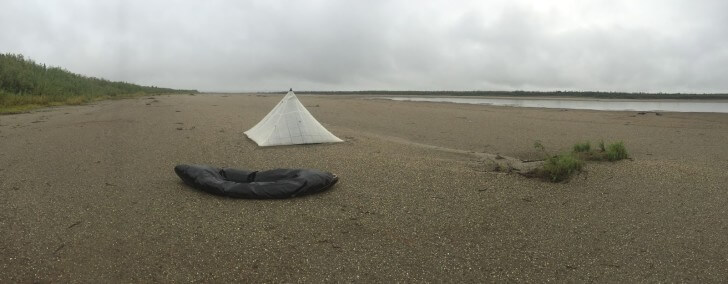
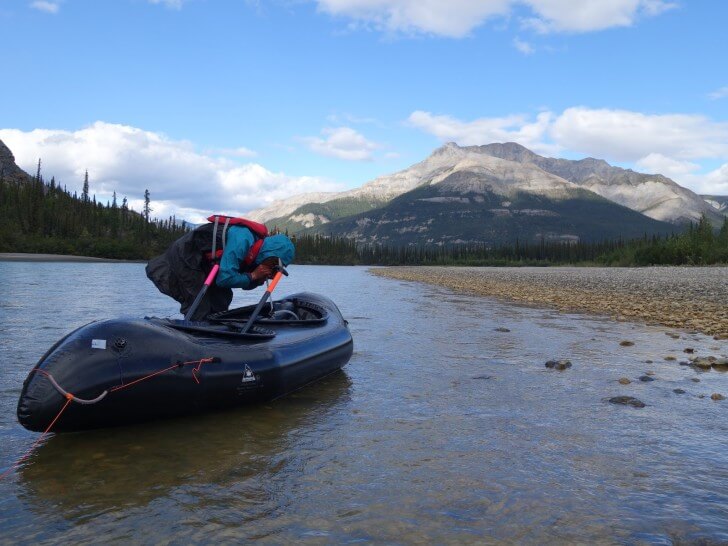
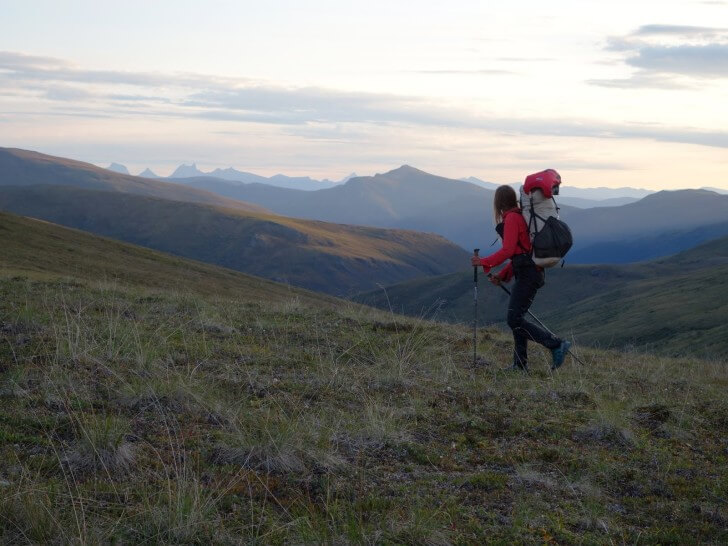
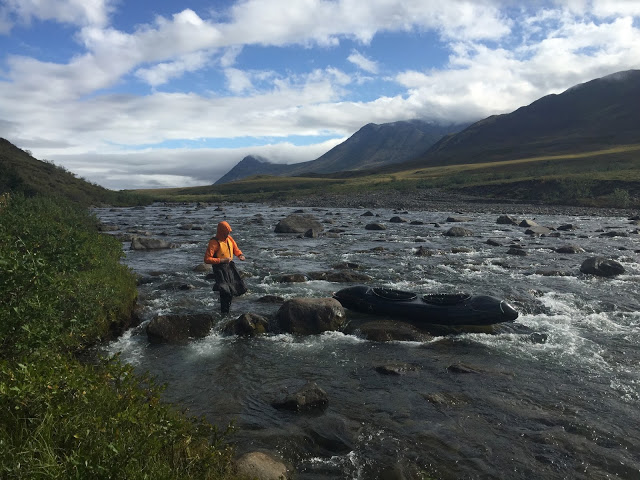
Quiet. Immense quiet. Huge wilderness. Nothing threatening. Aching body. Sitting up hurts. Always want to lay down. Loving the uncertainty and anticipation of new food. – Max Neale




Home › Forums › Max Neale Completes 500 Mile Brooks Range Traverse